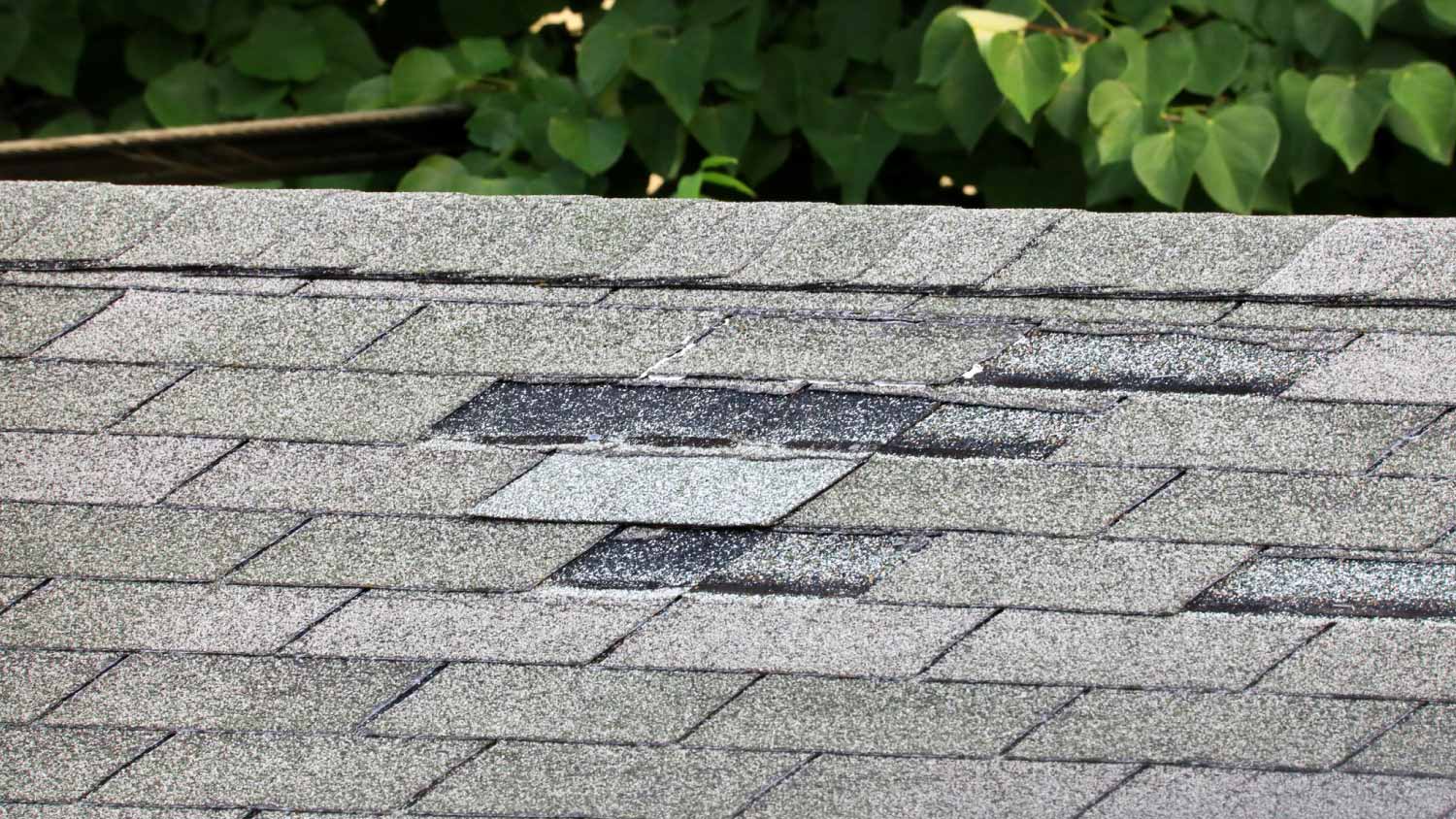
The cost of replacing a flat roof is much lower than an angled one. Learn about the factors that can affect flat roof replacement costs and ways to save on a quality replacement.
A blow-by-blow inspection guide for after the wind blows


Look for damaged or missing shingles, as well as issues with fascia, soffits, and flashing.
Inside, you might notice water stains on the ceiling if the roof above is compromised.
Call an emergency roofer to have any issues fixed immediately, and notify your insurance company of the damage.
Your roof sees a lot of action from rain, accumulating snow, hail, and blown debris, but you might be surprised to learn that strong winds can be some of the most damaging weather events for your shingles. After heavy winds, it’s a good idea to inspect your roof and look for signs of damage, but what, exactly, are you looking for? In this guide, we’ll explain how to identify wind damage to roof shingles so that you can get a solution in place right away.
Wind can damage your roof system in a variety of ways, so make sure you look for all of the following signs of wind damage on roof shingles.
The most obvious signs that wind has damaged your roof are missing or misaligned shingles. Scan your roof for areas where the uniform lines of shingles are interrupted, which could indicate shingles missing entirely or shingles that are partially compromised. Pay close attention to the bottoms of your roof slopes.
Unless your area saw extreme winds from a hurricane or tornado, it’s more likely that you’ll see curling shingles rather than missing ones. Inspect your asphalt shingles for signs that the corners or edges are curling up and are no longer sitting flat.
Look for creases on the shingles, which indicates that the material was bent up and then returned to its normal flat position. Even shingles that sit flat during your inspection can be at a higher risk of leaking if the material is creased.
If your roof sustained damage from wind-blown debris, you might notice pockmarks on the shingles, which often look like dark patches where the impact took place. You might notice a full puncture or just missing shingle grit over the affected area, but in either case, this could indicate a weak spot on your roof. Investing in impact-resistant shingles might be worth it if you find evidence of impact damage on your old shingles.
Check your soffits and fascia boards for signs of roof storm damage, including cracking and areas where they pulled away from the materials behind them. These issues could be a sign that the wind was intense enough to damage your actual shingles, too, even if you don’t see visible damage.
Look at the flashing materials around chimneys, roof vents, and other roof penetrations. Damage to flashing could cause interior leaks, and they could also suggest that your shingles have sustained damage.
Any kind of damage to your roof can lead to leaks and resulting water damage inside your home. Look for water marks on the ceilings throughout your upper floor, moldy odors within a few days of rainfall, or sudden spikes in utility bills, all of which can be symptoms of roof damage.

If you notice any of the above signs of wind damage to your roof shingles, or you’re unable to inspect your roof after a severe wind event but suspect there might be damage, call a local emergency roofing company to inspect your roof and fix the issues. Your professional will likely perform a full inspection and have tools at their disposal to carry out a proper repair.
The cost to repair storm damage to your roof averages around $12,300, but getting a fix in place immediately is the best way to limit the ongoing damage to your home. Most insurance companies will also cover wind-related issues, so consider contacting your insurance company first to see if your issue is covered.
If you have active leaks but need to wait for repair approval from your insurance company, consider tarping the damaged area. Some insurance companies will also retroactively cover the cost to tarp your roof.
From average costs to expert advice, get all the answers you need to get your job done.

The cost of replacing a flat roof is much lower than an angled one. Learn about the factors that can affect flat roof replacement costs and ways to save on a quality replacement.

Let the light flood into even the gloomiest attics and transform the look of your home. Here's how to calculate the cost of adding a dormer of any style.

If your metal roof needs a repair, it’s best to hire a roofing professional to handle it safely. Stay tuned to learn about cost factors for metal roof repair.

Roof insulation types include batts, spray foam, rigid foam boards, and fiber cement boards. Keep reading to learn which roof insulation is best for your home.

Choosing among the six best roofing materials for Cape Cod homes means finding the right mix of charm and durability. Learn more about your options.

Discover how to install metal roofing over shingles to add long-lasting weather protection to your existing roof without removing the old material.